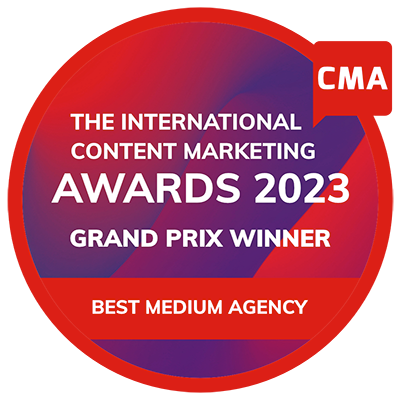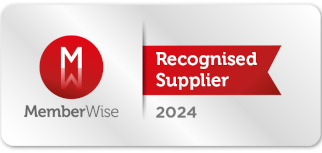
How to optimise your multilingual content strategy
Wendy Brooking,
-
DOWNLOAD
Your Content Marketing Checklist >

-
REQUEST TODAY
A Content Consultation >

For global brands, one of the biggest challenges is communicating content and brand messages consistently across multiple languages. For over 30 years, Dialogue has successfully delivered numerous multilingual projects, most notably our longstanding collaboration with Harley-Davidson’s Owners Group. Through ongoing refinement of our processes and the practical experience gained over time, we’ve developed deep expertise in managing and delivering effective multilingual content solutions.
Drawing on that expertise, Dialogue has established a clear framework that outlines best practices and highlights common pitfalls to avoid when developing a multilingual content strategy, particularly for brands engaged in content marketing or publishing print magazines.
Why high-quality source content matters in multilingual projects
High-quality translations rely on compelling source content – if the original lacks clarity or appeal, the translations will inevitably fall short. Make sure that the ‘master edition’ (usually English, but not always) is on brand, well written and concise. If the original content is not well-crafted in its native language, it reduces the ability of translators to convert it accurately and effectively.
Design matters
Effective multilingual content goes beyond just the language and designers play a critical role in ensuring that materials, particularly when it comes to printed publications, are appropriately adapted for their intended audience. It’s important to ensure that you have a plan to accommodate any extra text that many other languages may generate – French, for example, can often run longer than English. Either leave enough white space in the ‘master’ edition, or ensure you have expendable images, expandable columns or other malleable features that will make things easier when typesetting.
Translation, translation, translation
Choose your translation partners carefully. While machine translation may never be as reliable as a human – and certainly shouldn’t be considered as a cheap alternative with the technology currently available – most translation companies now offer automated verification of human-translated text and checking of accuracy, adherence to a glossary and so on.
While it may seem self-evident, translators should always be native speakers of the target language. If you get something translated back into your native language and it reads unnaturally or lacks fluency, it’s potentially because the agency used a translator whose first language is the source, not the target. Subpar translations lead to unnecessary editing and rewriting, compromising quality and efficiency. Insist on native-level fluency to avoid these issues.
Also consider whether the translators are subject experts? If you’re working for a niche brand, it’s important that the translation company has a background of work within the relevant industry and is willing to learn at least a little about the nuances of that brand. Some larger companies will consider ‘onboarding’ existing freelance translators – particularly ones with invaluable subject knowledge. In this way trusted freelance translators remain independent but can be seamlessly integrated into the overall process and share their knowledge with others.
Managing brand terminology across languages
Compile a glossary of terms that are particular to your brand. Which of these terms should be translated and how should they be translated in each language? Or are some of them ‘brand names’ that must remain the same, irrespective of language? It’s important to consider that elements like trademark regulations can vary across markets and should be factored into the localisation process.
At Dialogue, we swiftly gain a deep understanding of our clients’ requirements and implement them with meticulous attention to detail. Comprehensive style guides are developed for each edition of brand magazines and every language.
The role of style guides in multilingual projects
You may be wondering how the style guide differs from the glossary. The two go hand in hand, but the style guide should contain typesetting tips and tricks rather than linguistic preferences. German quote marks can be a little „different“ to English ones; while the French use « guillemets ». Les français also tend to add spaces before colons, semicolons, exclamation marks and question marks.
It should also cover formatting conventions that vary by market, for example:
- How is a thousand displayed? Is it written as ‘1,000’, ‘1000’, ‘1 000’ or ‘1.000’?
- How do markets treat page furniture? Should standfirsts, picture captions and pull quotes end with full stops?
- Should you italicise titles of books, movies, video games, or ships?
It’s vital to get these small details correct to ensure that your translated copy has the same level of authenticity as the source text.
Writing with a global audience in mind
Writing for an audience that shares your language and cultural background is naturally easier. You’re familiar with the idioms, humour and references that resonate. However, expressions that may feel clever or familiar in one market, such as idiomatic headlines, culturally specific jokes, or niche media references, can quickly alienate readers elsewhere.
To ensure content is globally relevant, your translation team must consider how language and culture vary across regions. A witty play on words or clever alliteration in one language may not translate meaningfully (or at all!) into another. It’s also important to empower translators to adapt or replace headlines and key phrases when a direct translation would be unclear, confusing, or culturally inappropriate.
Formatting multilingual content
Formatting can easily be lost during copy transfers, so it’s important to pay attention to the small details, especially when copying text from a Word document into a content management system or page layout for a website or print publication. These platforms can strip formatting or sometimes it can be human error and some can be overlooked.
There are other typographic elements that need to be taken into consideration when designing your material. For example, many languages have accents and special characters that may not be available in your chosen font. For those languages that use non-Roman alphabets, a different font entirely may be required.
Control multilingual production
Never underestimate the amount of time it takes to accurately complete a multilingual content marketing project. We know from experience that this certainly isn’t a one-person job.
Even if the workload is theoretically manageable by one person, it’s still best to divide it within a team. For example, spending a whole day on typesetting or proofreading can lead to tunnel vision, where accuracy diminishes over time and the task becomes increasingly disengaging.
To maintain accuracy and a fresh perspective, the team shares the workload and, when time allows, reviews each other’s work. During peak periods, it’s common for multiple team members to collaborate on multilingual projects to ensure consistency and efficiency.
Managing translation workflows
It’s important to always stay on top of the project. This can range from professional project management software to creating in-house trackers that are shared among a team, allowing them to see at a glance what stage each article is at in each language.
A quick scan of the tracker means anyone should be able to see which translators have returned work, which articles have been sent to the client for checking, which markets have returned feedback, and how close each edition or web article is to completion. It’s also a great way of maintaining communication between internal teams, with real-time updates to the tracker circumventing a need for constant back and forth via email.
Everyone involved in the project just needs to be aware of the importance of keeping a tracker up to date.
Managing proofs
When dealing with a lot of different parties, there’s always a high amount of comms and you could receive dozens of annotated PDFs and questions from different countries throughout the day.
Using online proofing and project management tools is a must. Clients around the world simply make their corrections collaboratively online. They don’t need to download any software and you receive notifications whenever a proof is corrected and the changes are ready to be implemented.
Following these tips helps to iron out any procedural difficulties when creating multilingual digital and print content, so you can reach your global audience with ease.
Read more about Dialogue’s expertise in crafting multilingual content for print or get in touch to discuss how Dialogue can further assist you with a multilingual project.
Read more insightful articles
See more from the blogThe future of luxury hospitality – Part 3: Wellness and the quest for meaning
The future of luxury hospitality – Part 2: Purpose and sustainability
The future of luxury hospitality – Part 1: Personalisation and technology
Behind the lens at the European H.O.G. Rally: how brand immersion drives creative agility
Proud to be a winner of industry awards, recognised as content marketing experts in print and digital media.












